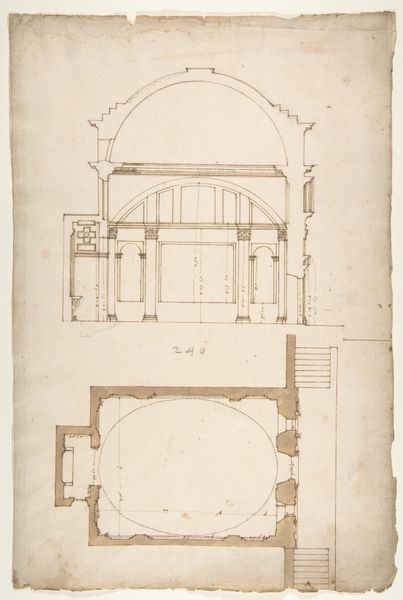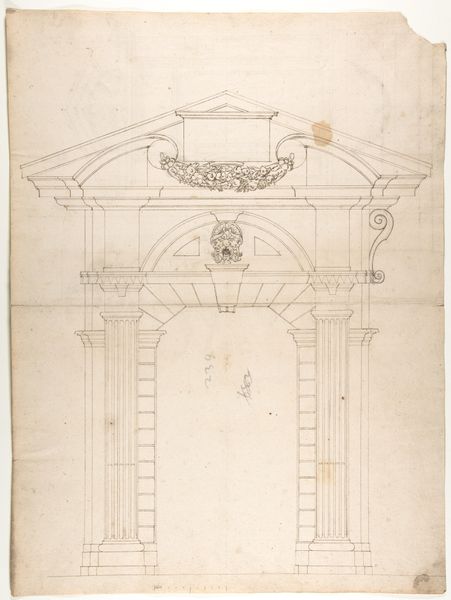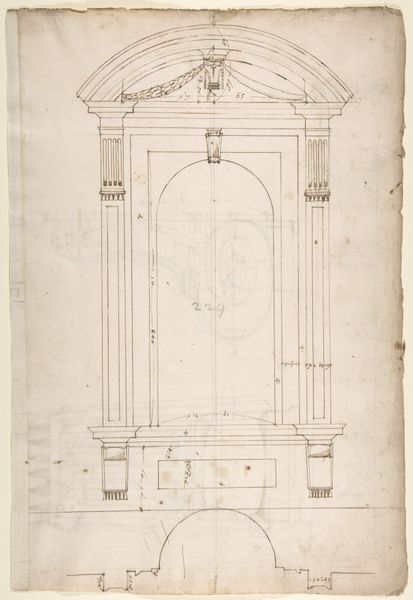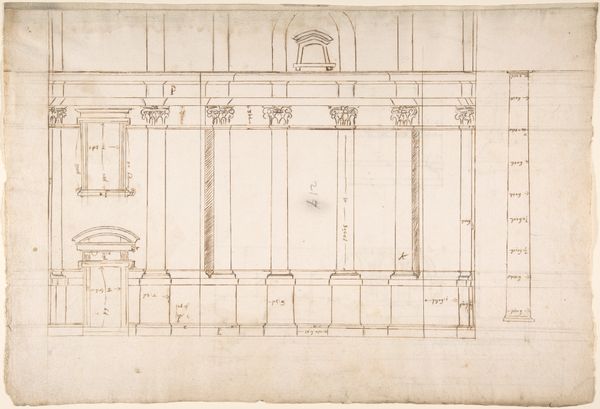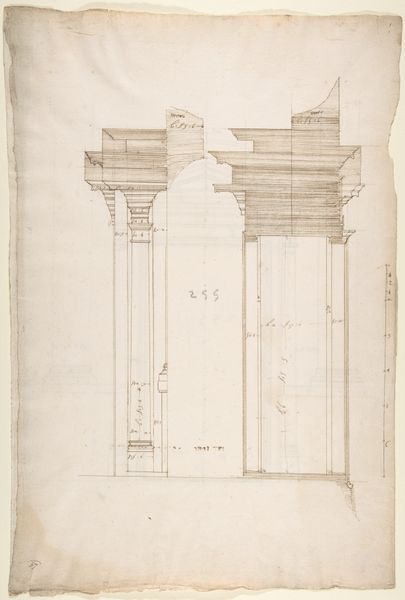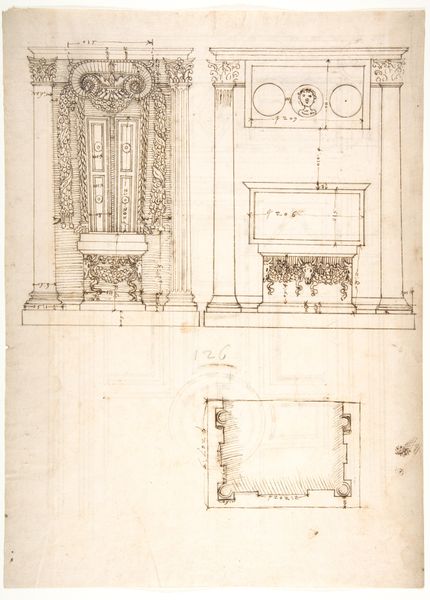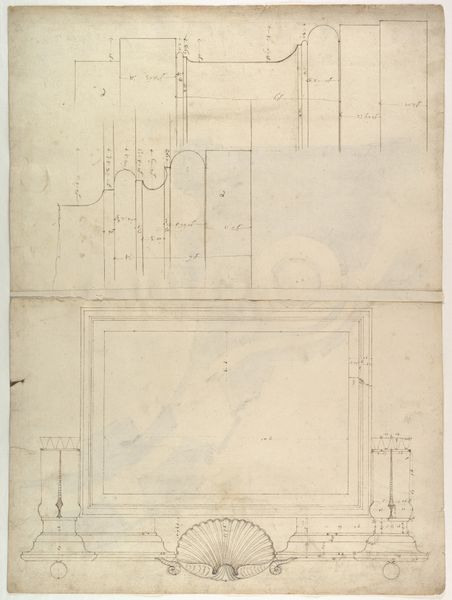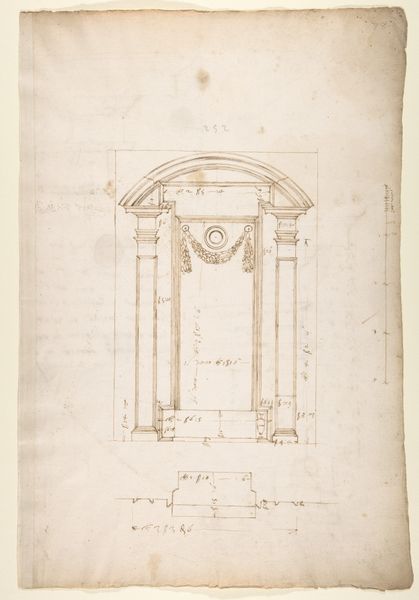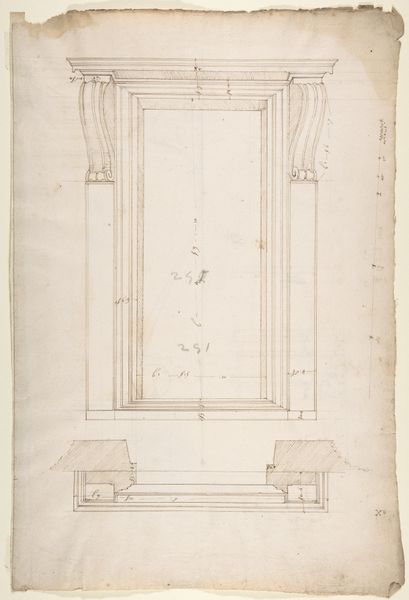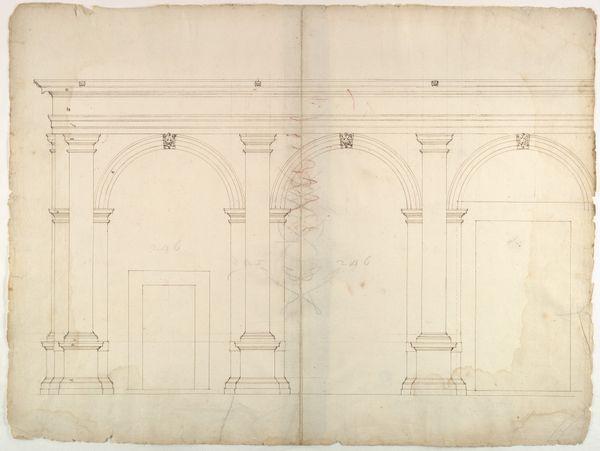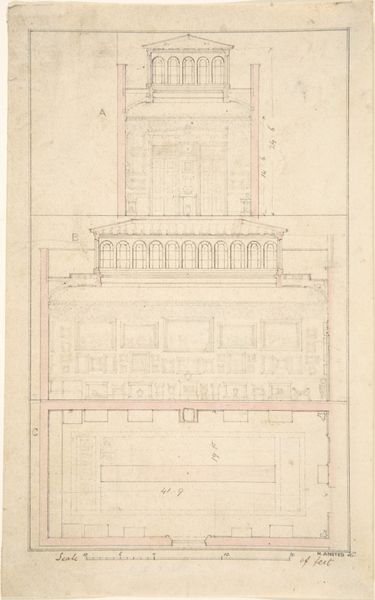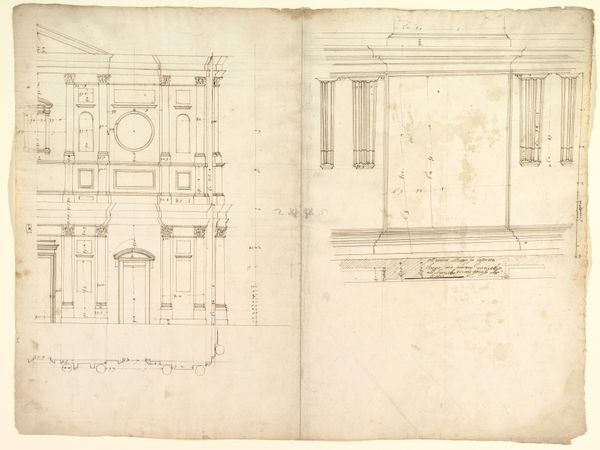
Arch of Constantine, elev, partial plan (recto) Arch of Constantine, profiles of base, shaft and entablature (verso) 1540 - 1560
0:00
0:00
drawing, print, paper, ink, architecture
#
architectural sketch
#
drawing
# print
#
paper
#
form
#
romanesque
#
ink
#
geometric
#
arch
#
line
#
architecture
Dimensions: sheet: 17 5/16 x 11 9/16 in. (44 x 29.3 cm)
Copyright: Public Domain
This sheet presents us with an anonymous drawing of the Arch of Constantine, rendered in pen and ink. The arch itself is a palimpsest of power. Note the recurring motif of the archway. A symbol of triumph since Roman times, it signifies victory, power, and imperial glory. Consider its evolution: from the simple city gates of antiquity, charged with the potential for both defense and welcome, to the elaborate, freestanding arches commemorating military victories. We see the echo of this form in triumphal arches throughout Europe, each one a conscious invocation of Roman authority. The arch, therefore, is more than stone and mortar. It's a psychological passage, a threshold, a space charged with expectation. As we pass beneath it, we are symbolically entering a new state, acknowledging a transition, submitting to a power. The Arch of Constantine, in its layered history and symbolic weight, becomes a powerful force that transcends time, engaging viewers on a deep, subconscious level. The non-linear, cyclical progression of this symbol resurfaces, evolving and taking on new meanings in different historical contexts.
Comments
No comments
Be the first to comment and join the conversation on the ultimate creative platform.
